No beach, no pool, no outdoor adventures? What to do in Hoi An when it rains? This is a very popular question from travelers who come to Vietnam in the wet season.
The rainy season in Hoi An (and central Vietnam) is affected by the monsoon regime, generally occurring in the last quarter of the year. It features a high rainfall because there are more than 20 rainy days monthly. The temperature definitely goes down, making travelers feel more pleasant but it’s always wet. Additionally, typhoons also hit the region many times in this period, causing heavy rains and then flooding. The lower part of the old town of Hoi An and the countryside will be covered by water (even some places are isolated!). Sure, traffic in these areas comes to a standstill.
So, anything to do on rainy days in Hoi An? This article reveals all what travelers can do and can’t do to ensure that a suitable plan is made easily.
Read also:
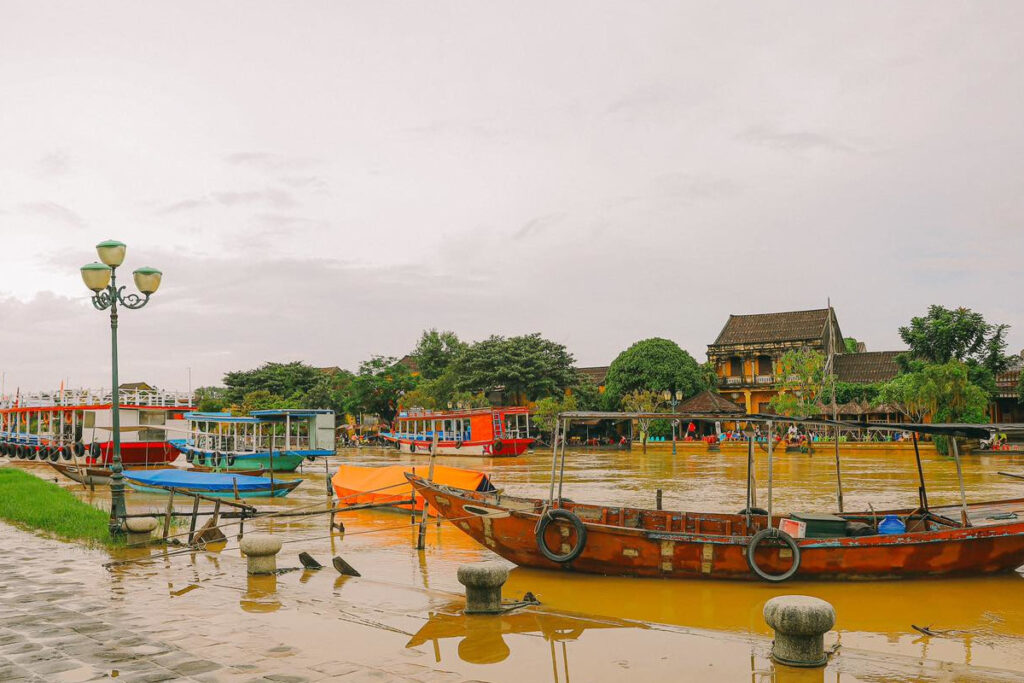
Table of content
- 1 Hoi An Wet (Rainy) Season
- 2 What to Do in Hoi An When It Rains
- 2.1 Making a Foldable Lantern
- 2.2 Learn How to Cook Vietnamese Foods
- 2.3 A Coffee Class with Local Baristas
- 2.4 Enjoy Vietnamese Coffee or Tea
- 2.5 Temples and Pagodas in Hoi An Old Town
- 2.6 Join a Leather Workshop
- 2.7 Old Houses in Hoi An Ancient Town
- 2.8 Museums in Hoi An Old Town
- 2.9 Shows of the Hoi An Lune Center
- 2.10 Traditional Performance in Hoi An Old Town
- 3 Things Not to Do in Hoi An On A Rainy Day
- 4 What to Bring If Travel in Hoi An Wet Season
- 5 Related Posts
- 6 Bach Ma National Park: Hiking, Trekking in Da Nang and Hoi An
- 7 Hoi An Wet Season: What to Do in Hoi An When It Rains?
- 8 Thanh Ha Terracotta Park
- 9 Vinwonders Nam Hoi An Theme Park (formerly Vinpearl Nam Hoi An)
- 10 Am Phu Cave Complete Travel Guide
- 11 Hoi An or Hue: Which is Better?
- 12 The Official Hoi An Travel Guide (MUST READ)
- 13 The Hoi An Market (Hoi An Central Market) Complete Guide
- 14 Hoi An Memories Show: The Best of Hoi An Impression Theme Park
- 15 Hoi An Bridge: Famous Bridges in Hoi An
- 16 How to Get From Hoi An to My Son Sanctuary
- 17 Hoi An’s Chinese Assembly Halls and Chinese Temples
- 18 Hoi An Walking Tours: Heritage, Foods, Photography & Locals
- 19 Hoi An Self Guided Walking Tour (Hoi An By Yourself)
- 20 How to Visit Golden Bridge Vietnam
- 21 Unique Experiences in Hoi An and Why?
- 22 An Bang Beach: A Guide to Hoi An’s Best Beach
- 23 Experiences in Hoi An: Get Insight Into Hoi An’s Local Culture
- 24 Things to Do in Ba Na Hills Besides Golden Bridge
- 25 Hoi An Nightlife: What to Do in Hoi An At Night?
- 26 Hoi An Countryside: Villages, Rice Fields & Tours
- 27 How to Get to Golden Bridge From Hoi An
- 28 Hoi An Entrance Fee: Old Town, Golden Bridge, My Son, More
- 29 Hoi An Airport: Everything You Need to Know
- 30 Hoi An Lantern Boat Ride on Hoai River
- 31 Hoi An Private Car and Driver
- 32 What to Do in Hoi An Ancient Town
- 33 Da Nang and Hoi An Itinerary for Visitors Staying Overnight in Hoi An
- 34 Hoi An 3 Day Itinerary: A Travel Plan for 3 Days in Hoi An
- 35 Hoi An Free Things to Do: Budget Travel in Hoi An Vietnam
- 36 Hoi An One Day Itinerary: A Travel Plan for One Day in Hoi An
- 37 Hoi An Half-Day Tours: Guide to Half Day Trips From Hoi An
- 38 Hoi An Day Tours: A Guide to Best Day Trips From Hoi An
- 39 Hoi An Beach: A Guide to All Beaches in Hoi An Vietnam
- 40 Hoi An Food Specialties
- 41 How to Get From Hoi An to Da Nang
- 42 Hoi An Cheap Things to Do: All Solo Travelers Need to Know
- 43 Hoi An Best Things To Do: Recommendations from Local Experts
- 44 Hoi An Things to Do: All What Can You Do in Hoi An Vietnam
- 45 Hoi An Things Not to Miss: A Guide to Must Do in Hoi An
- 46 Hoi An or Da Nang: Which is Better?
- 47 Hoi An Pottery Village: A Guide to Thanh Ha Pottery Village
- 48 Hoi An Ancient Town Tour
- 49 Hoi An Old Town Ticket: Price, Sellers, Included Sites, More
- 50 My Son Sanctuary Tour
- 51 Hoi An Lanterns: Festival, Making Class, Where to Buy, More
- 52 Hoi An Best Area to Stay: Guide to Where to Stay in Hoi An
- 53 Hoi An Weather by Month: Guide to Hoi An Monthly Weather
- 54 Hoi An River Cruise: Guide to The Best Boat Tour in Hoi An
- 55 Hoi An Old Town Boats: Guide to Boat Rides in Hoi An Town
- 56 Hoi An 2 Day Itinerary: Traveler Guide to 2 Days in Hoi An
- 57 Cham Island Hoi An
- 58 Hoi An Basket Boat Ride
- 59 Hoi An Coconut Village: A Guide to Cam Thanh Coconut Village
- 60 Hoi An Cham Temples: My Son Sanctuary & Quang Nam Temples
- 61 How to Get from Da Nang Airport to Hoi An
- 62 Da Nang to Hoi An: Best Da Nang Airport Transfer and More
- 63 Hoi An Tour Guide: How to Find a Private Tour Guide in Hoi An
- 64 Hoi An Ancient Town Attractions
- 65 Hoi An Old Town Map
- 66 Tra Que Vegetable Village
- 67 Hoi An Lantern Festival
- 68 Hoi An Night Market: A Thing to Do in Hoi An at Night
- 69 My Son Sanctuary Travel Guide
- 70 Hoi An Old Town Unesco World Heritage – Hoi An Travel Guide
- 71 Featured Tours and Experiences
- 71.0.1 Golden Bridge and Ba Na Hills Night Tour
- 71.0.2 Golden Hands Bridge Tour In Sunrise or Sunset (1/2 Day)
- 71.0.3 Cam Kim Island Bicycle Tour From Hoi An
- 71.0.4 Cham Island Tour From Hoi An (Group Tour)
- 71.0.5 Cham Island Tour From Da Nang (Group Tour)
- 71.0.6 Hoi An Vegetarian Food Tour
- 71.0.7 Hoi An Evening Walking Food Tour Through Laneways
- 71.0.8 Private Hoi An Basket Boat Tour (Shuttle Bus, Bicycle, Bike)
- 71.0.9 Half-day Am Phu Cave Tour (Private)
- 71.0.10 Hoi An Countryside Tour (Bicycle, Car, Electric Shuttle)
- 71.0.11 Da Nang Tour Package From Singapore
- 71.0.12 Hoi An Evening Tour From Da Nang
- 71.0.13 Hoi An Walking Food Tour Through Laneways
- 71.0.14 My Son Sanctuary and Hoi An Old Town Tour with Thu Bon River Cruise
- 71.0.15 My Son Day Trip From Hoi An including Marble Mountains and Basket Boat
- 71.0.16 Half Day Hoi An City Tour With River Cruise
- 71.0.17 Son Tra Peninsula Tour with Marble Mountains (Private/Small Group)
- 71.0.18 Hue Day Trip From Hoi An with Hai Van Pass, River Cruise & Lunch
- 71.0.19 Hoi An Ancient Town and Countryside Tour (Bests of Hoi An Tour)
- 71.0.20 Hoi An Tour From Da Nang Airport (Private, Optional Lunch)
- 71.0.21 Hoi An Day Trip From Da Nang (Marble Mountains, Basket Boat, Old Town)
- 71.0.22 Da Nang City Tour From Airport (Private, Optional Lunch)
- 71.0.23 Hoi An City Tour with Lantern Class, Lantern Boat, Night Market & Local Food Sampling
- 71.0.24 Marble Mountains, Basket Boat Ride & Hoi An Old Town Walking Tour
- 71.0.25 Marble Mountains & Golden Bridge Day Tour with Buffet Lunch
- 71.0.26 Marble Mountains & Monkey Mountain Tour (Half-day, Private)
- 71.0.27 Private Golden Bridge Sunrise Tour (Half-day, Optional Lunch)
- 71.0.28 Hoi An Ancient Town & Golden Bridge Day Tour (Private/Small Group)
- 71.0.29 My Son Sanctuary & Golden Bridge Day Tour (Private/Small Group)
- 71.0.30 Private My Son Sanctuary Sunrise or Sunset Tour
- 71.0.31 Full Day Hoi An Ancient Town & Countryside Experience With Local
- 71.0.32 Full Day My Son Sanctuary & Hoi An Countryside Tour With Local
- 71.0.33 Full Day Hoi An Ancient Town & Coconut Village Experience
- 71.0.34 Son Tra Peninsula, Marble Mountains and Hoi An City Tour
- 71.0.35 Half-day Marble Mountains Tour from Da Nang or Hoi An
- 71.0.36 Da Nang Cave Tour (Half Day Underground Tour in Da Nang)
- 71.0.37 Hoi An Old Town & Lantern Making Class (Morning Tour, Half-day)
- 71.0.38 Full Day Bests of Da Nang & Hoi An Old Town Walking Tour
- 71.0.39 Full Day My Son Tour From Da Nang with Da Nang City Tour
- 71.0.40 My Son Sanctuary Tour From Hoi An or Da Nang With Local Guide
Hoi An Wet (Rainy) Season
When Is the Wet Season in Hoi An?
Every year, the wet season stretches from the end of September to January in Hoi An and its area. It’s characterized by a higher rainfall and a lower temperature than the rest of the year – called ‘dry season’. When the temperature drops to the lowest degrees, locals call it ‘the cold season’ (usually November and December).
When Does Hoi An Flood?
The highest chance of flooding in Hoi An is in November and December. During these months – called ‘flooding season’, Hoi An’s old town and other parts of the city will be covered with water. It rains more than 20 days a month, followed by the highest rainfall and the lowest temperature in the year. Additionally, typhoons hit the area too, and damage many things. Our advice is to check the weather forecast if plan to go to Hoi An at the end of the year.
In the Old town, streets and places near the river are frequently flooded (for example, Bach Dang St or An Hoi island). If the water is high, the entire heritage site can be embraced by water, giving it a nickname ‘the Venice of Vietnam’. For that reason, visitors can’t walk and sightsee. Of course, restaurants, shops, markets, and outdoor activities will be shut for safety. There are some boats taking tourists to see around the town and life of local people. Read more information in https://centralvietnamguide.com/hoi-an-flooding.
What to Do in Hoi An When It Rains
Making a Foldable Lantern
Lantern is one of the symbols, reminders about Hoi An. It’s brought by Chinese communities from China to the town some centuries ago. Chinese people hang it in their house, especially in full moon, to have luck, peacefulness and happiness. On that day, a traditional lantern festival will be held by local people.
Note: Lanterns are a perfect gift/souvenir to bring home, and Hoi An’s lanterns are absolutely foldable.
A lantern making class can be within an hour, but also up to a few hours. The time depends on which step the learners start and the size of the lantern they choose. In the beginning of the class/workshop, they decide their favourite size, shape, and color of the covering fabric. In a ‘long class’, the artisan will instruct to form the frame with bamboo sticks. This stage is skipped if join a shorter class. After that, he/she tells learners the ways to use the glue properly and pieces of already-cut fabric to stick and cover the frame tightly. Everything is done by hand.
Learn How to Cook Vietnamese Foods
Hoi An is known as one of the food capitals in Vietnam. Here, Vietnamese, Chinese, Japanese, and Europeans exchanged the culture in past centuries when it’s still an international trading harbour. This leads to diversity and differences of Hoi An’s local cuisine.
Cooking classes in Hoi An are abundant, for both non-vegetarians and vegetarians, and available for all levels of skill. When it rains, travelers can think about staying indoors, in a restaurant inside the Old town or somewhere else in the countryside. A visit to the market to learn about and buy ingredients is possible to skip. The menu usually includes spring rolls (fresh or fried), banh xeo pancakes, salad, noodles (mi quang, cao lau), noodle soup (like pho) and other Vietnamese classics. It covers the starter, main course and appetizer. During the class, the chief will instruct to make the dishes from scratch. Learners definitely have a fun and meaningful time, especially families.
A Coffee Class with Local Baristas
Vietnam is the second largest coffee producer in the world. If interested in Vietnamese coffee and coffee culture, a class/workshop with local coffee makers (baristas) will be perfect on a rainy day. He will introduce different kinds of beans, variety, growing techniques, fragnance, how they’re different and anything around them. After that, he teaches how to make traditional coffees of Vietnamese people. This is a great chance to get to know other coffee lovers too. To know our recommendations, please text/call us in whatsapp number (zalo) +84968009827.
Enjoy Vietnamese Coffee or Tea
Hoi An has so many coffee shops and tea houses for visitors, to take a seat, enjoy local beverages, read a book or watch the world go by. The coffee beans or tea leaves they use are all grown in Vietnam. The Reaching Out teahouse (in Old town) supports deaf and mute persons, so if would like to give back to the local community, we highly recommend visiting this place.
Temples and Pagodas in Hoi An Old Town
Sightseeing temples and pagodas is a good way to learn about the history and culture of different populations in Hoi An old town. While Buddhist temples don’t require any entrance fee, visitors still need to pay to enter others, for example, Chinese assembly halls. Taking photos is allowed, and it’s needed to follow the dress code: wearing respectively.
These are temples and pagodas in Hoi An:
– Vietnamese temples: the Japanese covered bridge, Phap Bao pagoda, Cam Pho communal house, Tran family chapel, Nguyen Tuong family chapel, Hoi An communal house, Hy Hoa temple, the Five-elements temple (Nguyen Thai Hoc St)
Further: Chuc Thanh pagoda, Phuoc Lam pagoda
– Chinese temples: see in https://centralvietnamguide.com/hoi-an-chinese-assembly-halls/ (visitors can use Hoi An ancient town ticket to visit these buildings)
Join a Leather Workshop
Travelers can go to a leather shop or workshop to be instructed by local artisans, to make a leather item for themselves (wallet, bags, etc). Express classes are available, besides long clases in which one full day or a couple of days are required to complete. Not just making a meaningful souvenir/gift, the learners also have new knowledge and skills, and fantastic time to save. Text/call us in whatsapp number +84968009827 to know our recommendations.
Old Houses in Hoi An Ancient Town
Hoi An ancient town world heritage site has 1,000 traditional houses. Some of them are exceptionally preserved by the family, so that visitors will see real residences of Hoi An’s locals many centuries ago. It’s needed to have an Old town ticket pass to go in. Here is the list of the best protected houses:
- Tan Ky house at 101 Nguyen Thai Hoc St
Highlights: free introduction, flooding levels each year shown
- Phung Hung house at 4 Nguyen Thi Minh Khai St
Highlights: local ladies weave embroideries here
- Duc An house at 129 Tran Phu St
Highlights: home of Mr Cao Hong Lanh (a local revolutionist, communist)
- Quan Thang house at 77 Tran Phu St
Highlights: here the family is making white rose dumplings (Hoi An’s food specialty)
- Nguyen Tuong family chapel at 8/2 Nguyen Thi Minh Khai St
Highlights: the family has many famous writers
Museums in Hoi An Old Town
Besides old houses and temples, visitors can see five museums in Hoi An’s old quarters. Here they are:
- Museum of History and Culture (aka ‘Hoi An museum’) at 10B Tran Hung Dao St
- Museum of Sa Huynh culture at 149 Tran Phu St
- Museum of Traditional medicine at 46 Nguyen Thai Hoc St
- Museum of Trade ceramics at 80 Tran Phu St
- Museum of Folklore at 33 Nguyen Thai Hoc St
To visit these museums, travelers must buy an entrance ticket which costs 120,000 VND for adults. This pass includes the entry to Hoi An old town world heritage and 5 places and traditional performance (see details of this show above/below).
Shows of the Hoi An Lune Center
The Lune production is the first producer bringing world-class cultural performances to Hoi An. Before coming to Hoi An, this team achieved international rewards. Its home – the Lune center building stands in An Hoi island, opposite to the Ancient town, so it’s very convenient to walk there.
For now, there is only one show which visitors can choose: the The Dar or ‘Bamboo circus show’ (firstly on stage in August 2016 at Ho Chi Minh city). It starts at 6 pm and ends after an hour. Again, definitely it’s held in an indoor stage and visitors don’t have to worry about the rain while watching it. The standard ticket price is 700,000 VND. Text/call us in whatsapp number +84968009827 to make a reservation in advance (no fee).
Note: After the Hoi An Lune center’s show, visitors easily find somewhere to have dinner or get a cold beer in the surroundings. The biggest night market in town is just 5 mins walk.
Traditional Performance in Hoi An Old Town
Visitors can use the Hoi An old town ticket to enter the Traditional art performance house at 66 Bach Dang St to watch this mini show. It’s available at 10:15 am and 3:15 pm everyday, and for sure, it’s held indoors. Its duration is 15 minutes and the spectators are advised to be in the theatre at least 10 mins before showtime.
Please show the ticket pass for the staff (to the right hand side) and then receive a card to join a Vietnamese traditional game later. Go upstairs and take a seat in the stand to enjoy performances. The room is air-conditioned.
If Bach Dang street is flooded, this performance house will be closed. Please check when come.
Things Not to Do in Hoi An On A Rainy Day
The Golden Hands Bridge/Ba Na Hills
The weather is very important to decide how good the trip to Ba Na hills and the Golden bridge is. Because these places are in high mountains, so when it’s rainy, can’t see anything or take any good pictures. If traveling in the wet season (end of September to January), please don’t forget to check the weather forecast.
We have private cars to Ba Na hills and Golden bridge from Hoi An or Da Nang, and also guided tours. See full information in full-day Ba Na hills and Golden bridge or half-day Golden bridge tour.
Basket Boat Ride in Palm Forest
Cam Thanh village, west of Hoi An old town is the only place in Vietnam where people can take a basket boat ride through a palm forest. Yes, it’s unique. However, if it rains, as an outdoor activity, travelers can’t find any boats to go or can’t fully enjoy everything. The water of the river will rise in the wettest months, making the village flooded and the forest is closed. This is dangerous for visitors, so please don’t consider carefully.
Please read everything you need to know about Hoi An’s bamboo boat ride in https://centralvietnamguide.com/hoi-an-basket-boat-ride/.
Lantern Boat Ride on Hoai River
Hoai river runs by the Hoi An ancient town world heritage. At night, locals paddle sampan boats on this river to see the world and release paper wishing lanterns. The busiest days are within Hoi An full moon lantern festival or weekends. Although a plastic tarp is arranged to cover passengers from the rain, it’s not 100% well worth experiencing. Let’s wait until it stops raining!
The ticket price now is 150,000 VND for a boat with 1 to 3 people, and 200,000 VND for 4 and 5 people. 5 passengers are maximum (don’t count toddlers!). More information in our guide to Hoi An lantern boat ride.
Cham Islands
In the rainy season, going to Cham islands is not safe and tours to this beautiful archipelago are shut from the beginning of October. If willing to explore its underwater life, like snorkeling or diving, please contact experts (experienced divers) to know their advice.
What to Bring If Travel in Hoi An Wet Season
If traveling to Hoi An in Vietnam in the wet (rainy season), please don’t forget to bring these things:
– personal rain poncho (or jacket), umbrella
– mosquito repellent (insect repellent)
– waterproof shoes
– easy-to-dry clothes
– hair dryers to use after hanging out
– something waterproof to cover the luggage and smartphone (if plan to go outdoors everyday)
Related Posts
Bach Ma National Park: Hiking, Trekking in Da Nang and Hoi An
Two best places for trekking and hiking in and near Da Nang are Son Tra mountain (peninsula) and Bach Ma national park. Which one is better is actually personal because these
Hoi An Wet Season: What to Do in Hoi An When It Rains?
No beach, no pool, no outdoor adventures? What to do in Hoi An when it rains? This is a very popular question from travelers who come to Vietnam in the
Thanh Ha Terracotta Park
Between 15th and 19th centuries, Hoi An was one of major stopovers for sailing merchants to trade in Southeast Asia. Meanwhile, craftspeople in its Thanh Ha village produce high-quality pottery
Vinwonders Nam Hoi An Theme Park (formerly Vinpearl Nam Hoi An)
In addition to historical and cultural attractions, nowadays Hoi An also has a couple of amusement parks to entertain. Definitely, they’re ideal places for families with children and groups of
Am Phu Cave Complete Travel Guide
Although in the Marble mountains – the most visited attraction in Da Nang, travelers often miss Am Phu cave. One of reasons is that it’s mentioned much online and not
Hoi An or Hue: Which is Better?
Both Hoi An and Hue cities are in the middle of Vietnam, and they’re not far from each other (about 130 km). Therefore, for those who travel from north to
The Official Hoi An Travel Guide (MUST READ)
By the estuary of Thu Bon river, Hoi An is one of the best places to visit in Vietnam. This Vietnamese town is a package for travelers – a pretty
The Hoi An Market (Hoi An Central Market) Complete Guide
The Hoi An Market is the first market in Hoi An ever. Over centuries, it’s still the largest market in town although the town has a much bigger size than
Hoi An Memories Show: The Best of Hoi An Impression Theme Park
The Hoi An Memories Show is a famous series of outdoor performances in Hoi An at the present time. Thanks to its exceptional production and great cultural stories, it becomes
Hoi An Bridge: Famous Bridges in Hoi An
Hoi An has many bridges because it’s located at the confluence of 3 rivers: Thu Bon river, De Vong river and Truong Giang “Long river”. The distributaries of these rivers
How to Get From Hoi An to My Son Sanctuary
My Son sanctuary is one of the most popular places to visit for tourists staying overnight in Hoi An, especially those who spend many days there. It’s known for a
Hoi An’s Chinese Assembly Halls and Chinese Temples
Chinese people migrated to Hoi An from the early 17th century. Today, Chinese communities as a whole are the second most important piece to form the town’s unique culture. The foremost
Hoi An Walking Tours: Heritage, Foods, Photography & Locals
Strolling around heritage quarters with a local guide is the activity that so many travelers love to do in Hoi An. It enriches their time in this lovely town. Firstly,
Hoi An Self Guided Walking Tour (Hoi An By Yourself)
Hoi An old town is friendly for pedestrians, especially during the time that motorized vehicles (scooters, cars, etc) are prohibited to move around its heritage quarters. That is safe for
How to Visit Golden Bridge Vietnam
The Golden Hand Bridge of Ba Na hills today is a dream place to visit for many travelers. Since it opened in June 2018, millions of people have set their
Unique Experiences in Hoi An and Why?
Today, travelers seek more experiences in the destination they go to. They want to have a deeper understanding about the culture of local people and interact with them. No other
An Bang Beach: A Guide to Hoi An’s Best Beach
An Bang beach now becomes a popular tourist attraction in Hoi An. It may be the best known and most convenient to reach from the town’s centre. Not only tourists,
Experiences in Hoi An: Get Insight Into Hoi An’s Local Culture
As the most unique Vietnamese town, Hoi An is definitely worth visiting. Here, visitors have many things to do and experiences for their holiday time. Everyone knows that it has
Things to Do in Ba Na Hills Besides Golden Bridge
According to local authorities, 50% of visitors coming to Da Nang and Hoi An visit the Ba Na hills. In other words, that is nearly 10 millions of people. This
Hoi An Nightlife: What to Do in Hoi An At Night?
After dark, Hoi An becomes exceptionally spectacular. If planning to stay overnight or visiting this ancient heritage town, at least travelers know that it’s “decorated” by so many colorful lanterns.
Hoi An Countryside: Villages, Rice Fields & Tours
By the coast, Hoi An is at the confluence of 3 rivers: Thu Bon river, Truong Giang river and De Vong river. This economically strategic location has supported trading activities
How to Get to Golden Bridge From Hoi An
There are many travelers visiting the Golden bridge from Hoi An. Both the bridge and the town today are must-see places in the region, so staying overnight in the town
Hoi An Entrance Fee: Old Town, Golden Bridge, My Son, More
Are you planning to visit Hoi An? And you don’t know how much cash you need to prepare for visiting places? This article lists tourist attractions in Hoi An and
Hoi An Airport: Everything You Need to Know
Hoi An is a famous tourist city in Vietnam. It’s 800 kilometers away from Hanoi, the capital of Vietnam and nearly 1,000 kilometers from Ho Chi Minh city, the biggest
Hoi An Lantern Boat Ride on Hoai River
A lantern boat ride is a thing to do that visitors must do today in Hoi An. For many centuries, locals have taken it on the Hoai river by the
Hoi An Private Car and Driver
Hoi An is one of the most popular tourist destinations in Vietnam. In the busiest year, it attracts about 9 millions visitors who come to enjoy its charming beauty, rich
What to Do in Hoi An Ancient Town
Hoi An Ancient Town is a must see, not only thanks to its world heritage title, but also to its vintage urban landscape, lots of attractions and activities. In the
Da Nang and Hoi An Itinerary for Visitors Staying Overnight in Hoi An
Da Nang and Hoi An are twin cities in the heart of Central Vietnam. Both are popular tourist destinations for either domestic or international visitors, and share many similarities. Due
Hoi An 3 Day Itinerary: A Travel Plan for 3 Days in Hoi An
3 days are a perfect duration to stay overnight in Hoi An and explore captivating places in and around it. Especially for those who travel from city to city or
Hoi An Free Things to Do: Budget Travel in Hoi An Vietnam
Travelers should know free things to do in Hoi An, to save the budget for this wonderful city and by that, can stay longer to explore. From old town, countryside
Hoi An One Day Itinerary: A Travel Plan for One Day in Hoi An
From a backwater town in the 1990s, Hoi An today is one of leading tourist destinations across Vietnam. In a recent year, it attracted 8,5 millions of overnight visitors and
Hoi An Half-Day Tours: Guide to Half Day Trips From Hoi An
Top attractions near Hoi An require a couple of hours or half a day, to get there and visit around. The reason is that all have many things to see,
Hoi An Day Tours: A Guide to Best Day Trips From Hoi An
Near Hoi An, there are many fantastic places making travelers can’t stay in the room and have to go out to explore. Appeal Golden bridge – the new world wonder,
Hoi An Beach: A Guide to All Beaches in Hoi An Vietnam
Not only an old town, Hoi An has beaches as well! That are sandy, edged by tropical water and lined by palm forests. Travelers don’t need to wait or move
Hoi An Food Specialties
Hoi An is a melting pot where people from different parts of Vietnam and countries in the world have gathered and exchanged their cultures. As a result, this town has
How to Get From Hoi An to Da Nang
Da Nang is the neighbouring city of Hoi An. It's the capital of Central Vietnam and has the most important (busiest) transport hubs of the region, such as airport, train
Hoi An Cheap Things to Do: All Solo Travelers Need to Know
Knowing free and cheap things to do in the city where travelers are going to visit, is helpful. First of all, they can save and, thanks to that, can stretch
Hoi An Best Things To Do: Recommendations from Local Experts
It is no coincidence that Hoi An is in the list of must-visit places once in the lifetime of many travelers. Located by a river, it’s borned to welcome people
Hoi An Things to Do: All What Can You Do in Hoi An Vietnam
Hoi An is in the bucket list of most travellers who plan to visit the Central part of Vietnam. It’s a lovely old and small town located downstream of a
Hoi An Things Not to Miss: A Guide to Must Do in Hoi An
In fact, there are so many things to do in Hoi An, one of the 10 best cities in Asia by Travel + Leisure in 2021. It has a lantern-filled
Hoi An or Da Nang: Which is Better?
Da Nang and Hoi An are located in Central Vietnam, with a distance of roughly 30 km. To the north, Da Nang is the capital city of the region, with
Hoi An Pottery Village: A Guide to Thanh Ha Pottery Village
Hoi An used to be a bustling, prosperous trade port during past centuries, before its role was replaced by Da Nang. Merchants from many countries on different continents came here
Hoi An Ancient Town Tour
Hoi An Ancient Town is a Unesco world heritage site by the mouth of the Thu Bon River. It has grid-plan streets filled by silk lanterns and bougainvillea flowers that
Hoi An Old Town Ticket: Price, Sellers, Included Sites, More
As an attraction including attractions, Hoi An Old Town requires an entrance ticket to tourists who come from other parts of Vietnam and the world. It raises funds for preservation of
My Son Sanctuary Tour
My Son Sanctuary is a Unesco world heritage site, attracting 450,000 visitors in recent years. It’s the best remains left by the fallen Champa Kingdom which ruled a part of
Hoi An Lanterns: Festival, Making Class, Where to Buy, More
Lanterns are the signature of Hoi An Old Town, the 3rd Unesco world heritage site in Vietnam. Especially at night, these traditional handicraft objects are lit up and make the town
Hoi An Best Area to Stay: Guide to Where to Stay in Hoi An
In the busiest year, nearly 5,5 millions travellers decided to stay overnight in Hoi An. It’s the largest number that a city in the Central coast of Vietnam ever achieved.
Hoi An Weather by Month: Guide to Hoi An Monthly Weather
Hoi An won the title “Asia’s leading cultural destination” recently in a reputable global travel award. It’s a pretty riverine-coastal town with an ancient root, surrounded by peaceful pieces of
Hoi An River Cruise: Guide to The Best Boat Tour in Hoi An
Hoi An town is by the left bank of the Thu Bon River, and by that, it draws plenty of merchants by sailing boat to visit and trade. Its golden
Hoi An Old Town Boats: Guide to Boat Rides in Hoi An Town
Hoi An town sits by the left bank of the Thu Bon River, the largest and most important waterway in mother Quang Nam province. It’s also near the mouth of
Hoi An 2 Day Itinerary: Traveler Guide to 2 Days in Hoi An
2 days are enough to know the highlights in Hoi An, a famous tourist destination in Central Vietnam. And for those who travel from city to city, 48 hours are
Cham Island Hoi An
The purple islands seen from An Bang or Cua Dai beaches are the Cham Islands. It’s one of the kind in the region where God bless it with fabulous beautiful
Hoi An Basket Boat Ride
Nowhere else outside of Hoi An Coconut Village, travelers can find a basket boat ride across the immense palm forests. It’s an experience that allows the passengers to know better
Hoi An Coconut Village: A Guide to Cam Thanh Coconut Village
Hoi An Coconut Village boasts of the most interlaced waterway system in the city. Four rivers encircle it and are connected together with smaller canals. Thanks to fertile alluvia and
Hoi An Cham Temples: My Son Sanctuary & Quang Nam Temples
Cham people settled in Hoi An before the Vietnamese arrived and handed it over in 14th century. Influenced by Indian culture, they called the land “Amaravati”, similar name to a
How to Get from Da Nang Airport to Hoi An
Located in the city of the same name, Da Nang airport is the nearest airport to Hoi An. So, if travelers want to see an extremely-colorful Lantern festival or try
Da Nang to Hoi An: Best Da Nang Airport Transfer and More
If traveling to Hoi An by air, train and cruise ship, visitors will come to Da Nang first and then have a transfer. The largest city of Central Vietnam holds
Hoi An Tour Guide: How to Find a Private Tour Guide in Hoi An
Most tour packages in Hoi An cover “ a guide”. He or she may be the first and closest local to the visitors, who lead the group to enjoy the
Hoi An Ancient Town Attractions
Spreading over an area of 30 hectares, Hoi An Old Town owns more than 1,100 timber buildings varying in function or type. In the oldest street, the Japanese bridge spans
Hoi An Old Town Map
There are so many things to see, do, eat and sleep in Hoi An Old Town, so the visitors often are confused while planning and exploring. Starting the research from
Tra Que Vegetable Village
Located in a prime location between two famous attractions, the Old Town and An Bang beach, Tra Que vegetable village is a featured point of interest. It’s famous for vegetable
Hoi An Lantern Festival
The Lantern Festival is amongst the best times to visit Hoi An. In which, visitors will immerse themselves in a shimmering world of uncounted lantern lights. When the crowds fill
Hoi An Night Market: A Thing to Do in Hoi An at Night
One of the most visited attractions in Hoi An is its night market. Because it is located right near the Old town, first-timer travelers commonly explore both top sights in
My Son Sanctuary Travel Guide
My Son Sanctuary is a complex of Hindu temples and a Unesco world heritage site from 1999. It’s 40 km away from Hoi An and 70 km to the southwest
Hoi An Old Town Unesco World Heritage – Hoi An Travel Guide
Situated 30km south of Da Nang, Hoi An ancient town is one of the best attractions in Central Vietnam. It is titled as the prettiest town of the country and



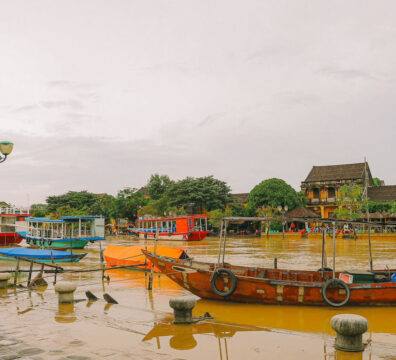
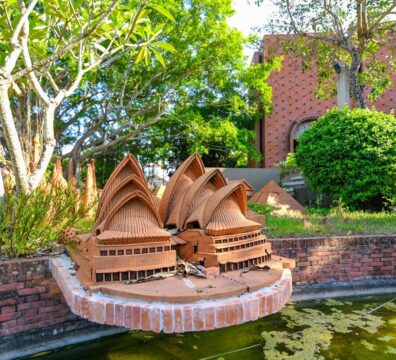



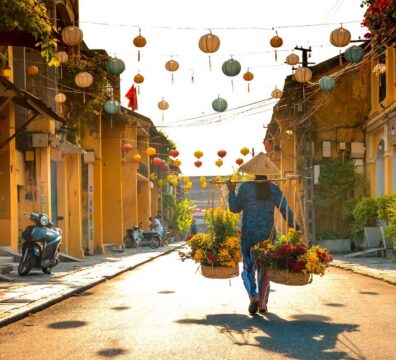


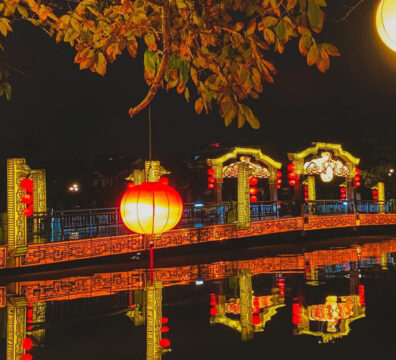
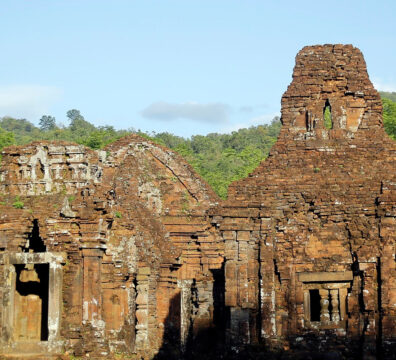


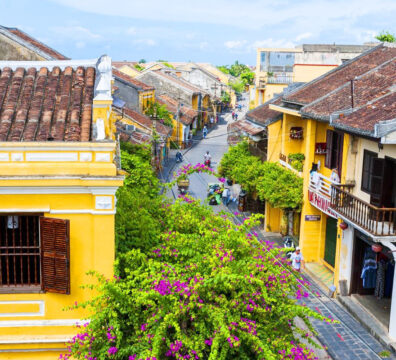







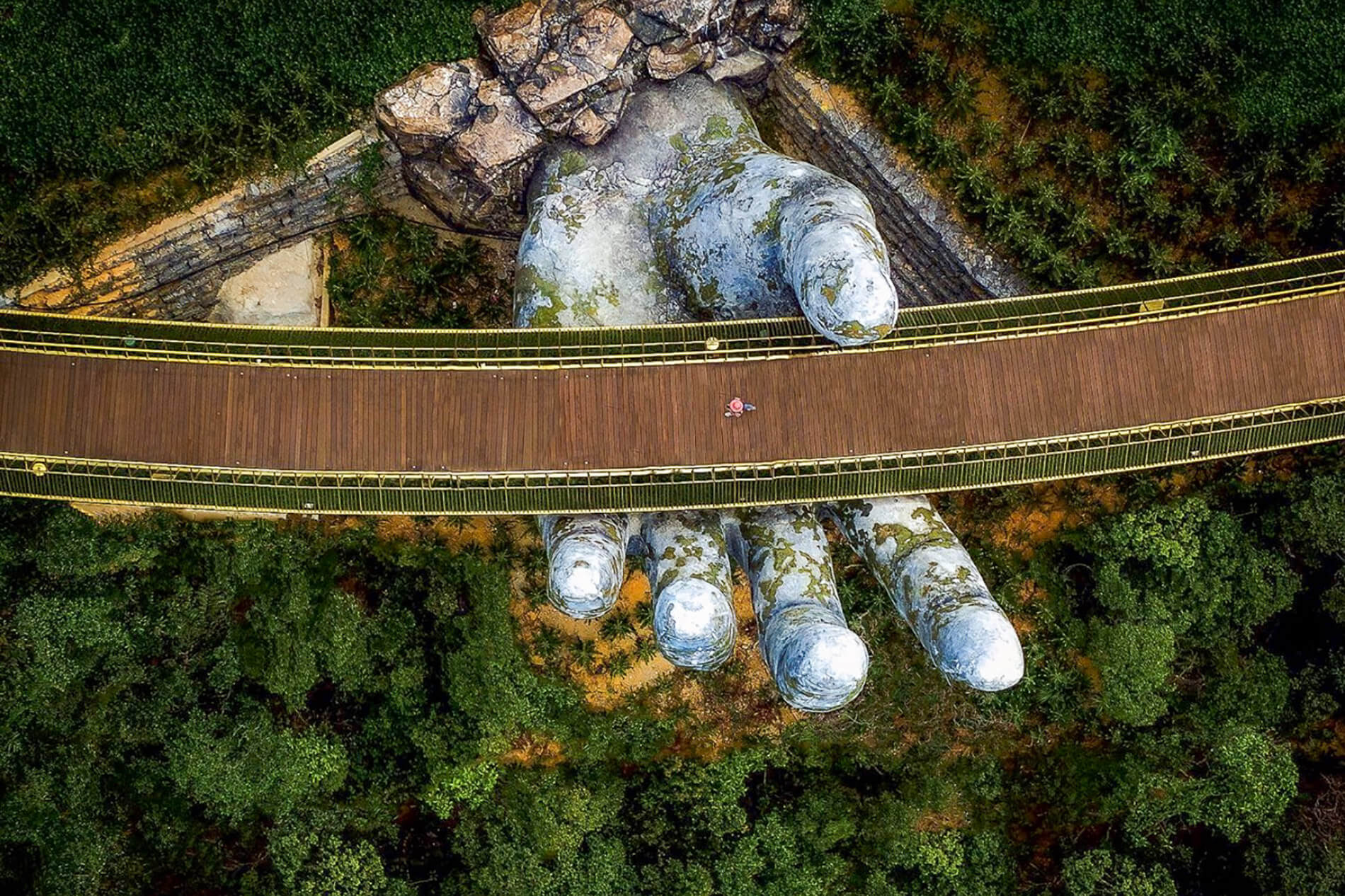











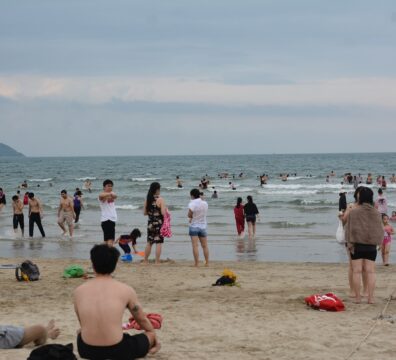

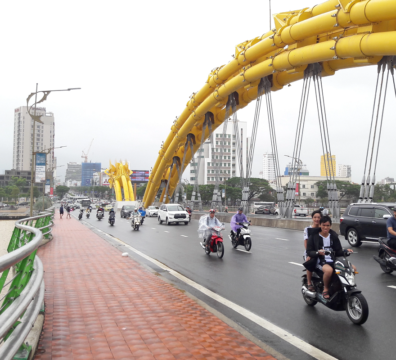









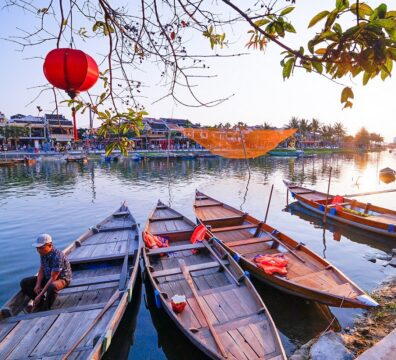


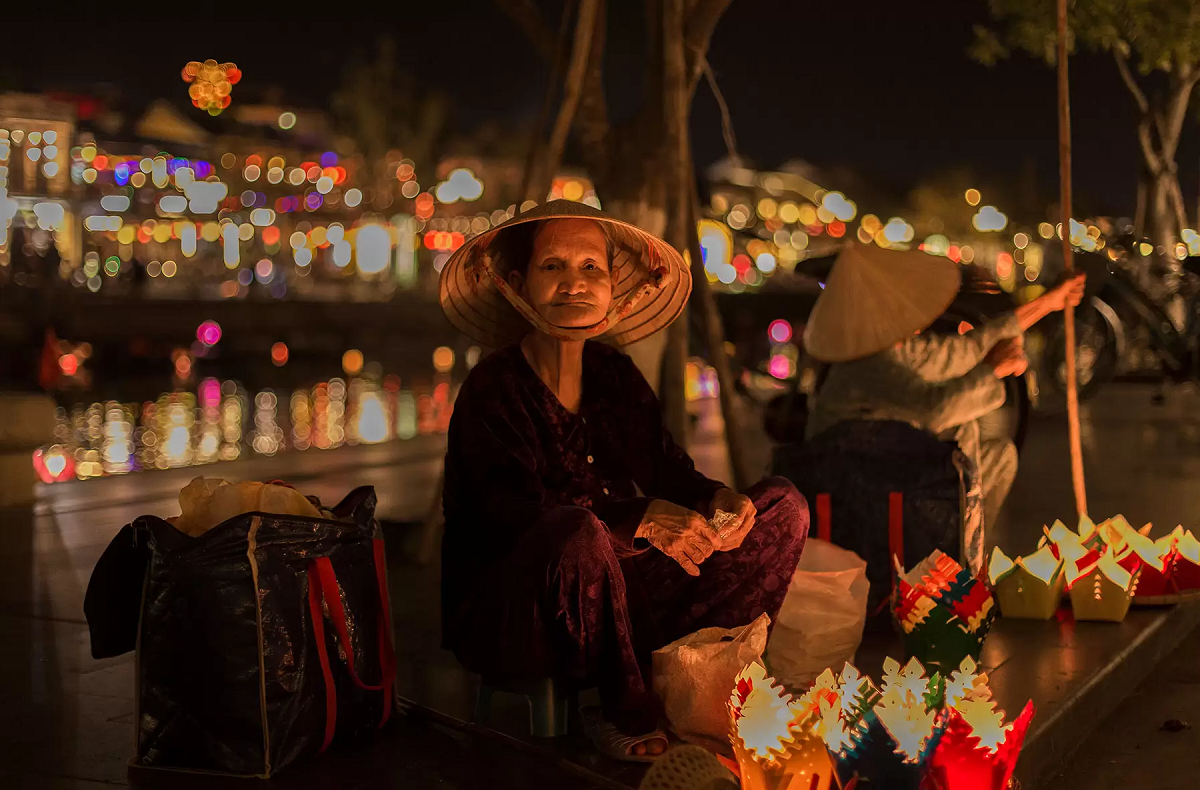







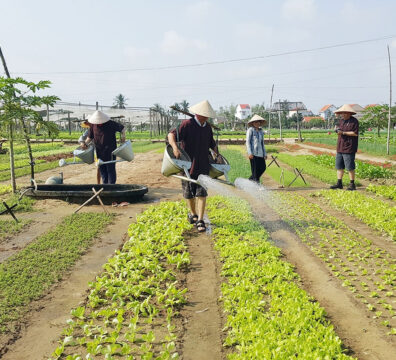
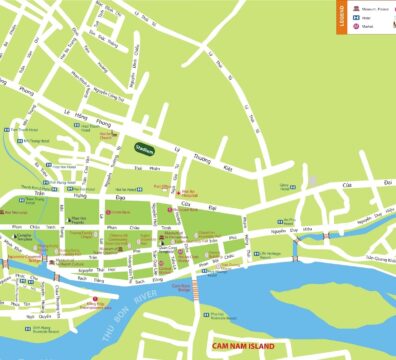

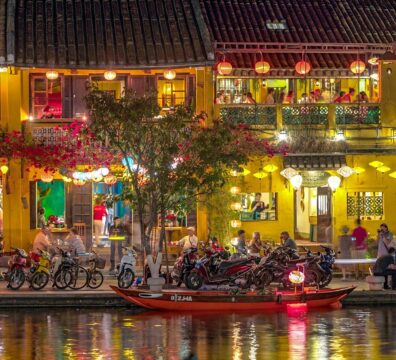
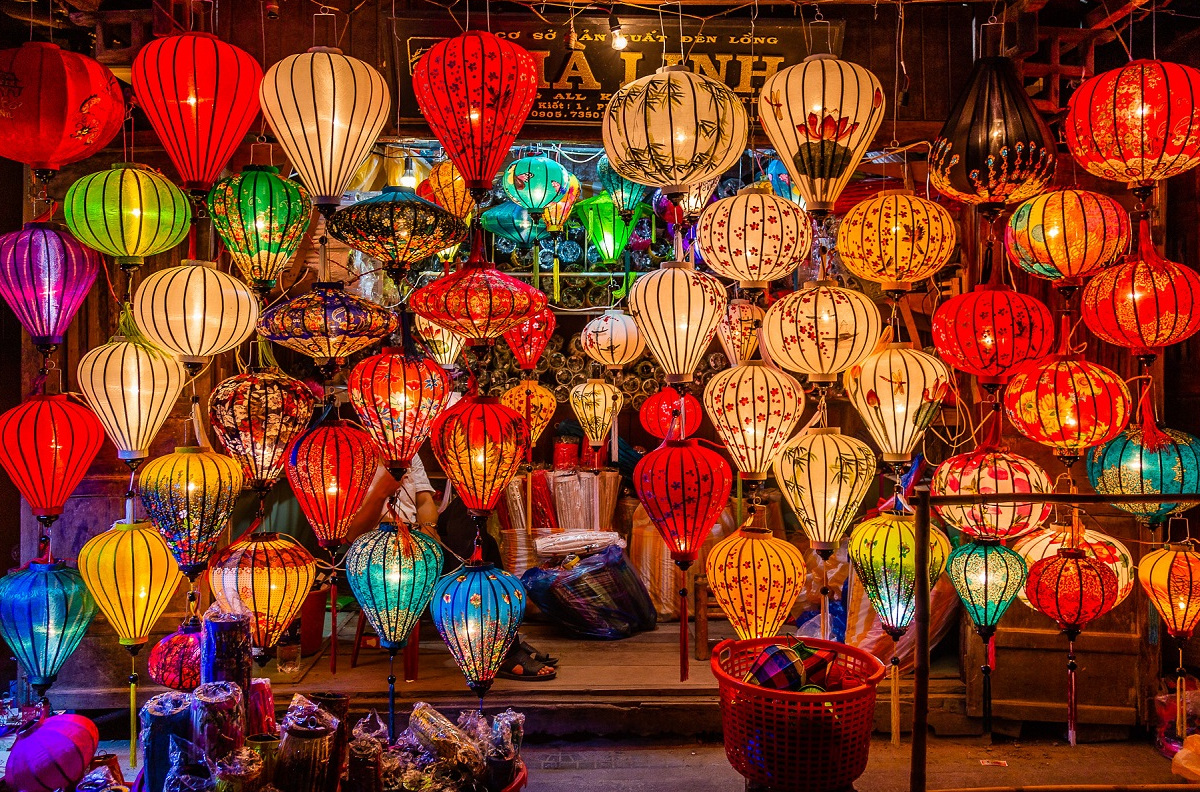




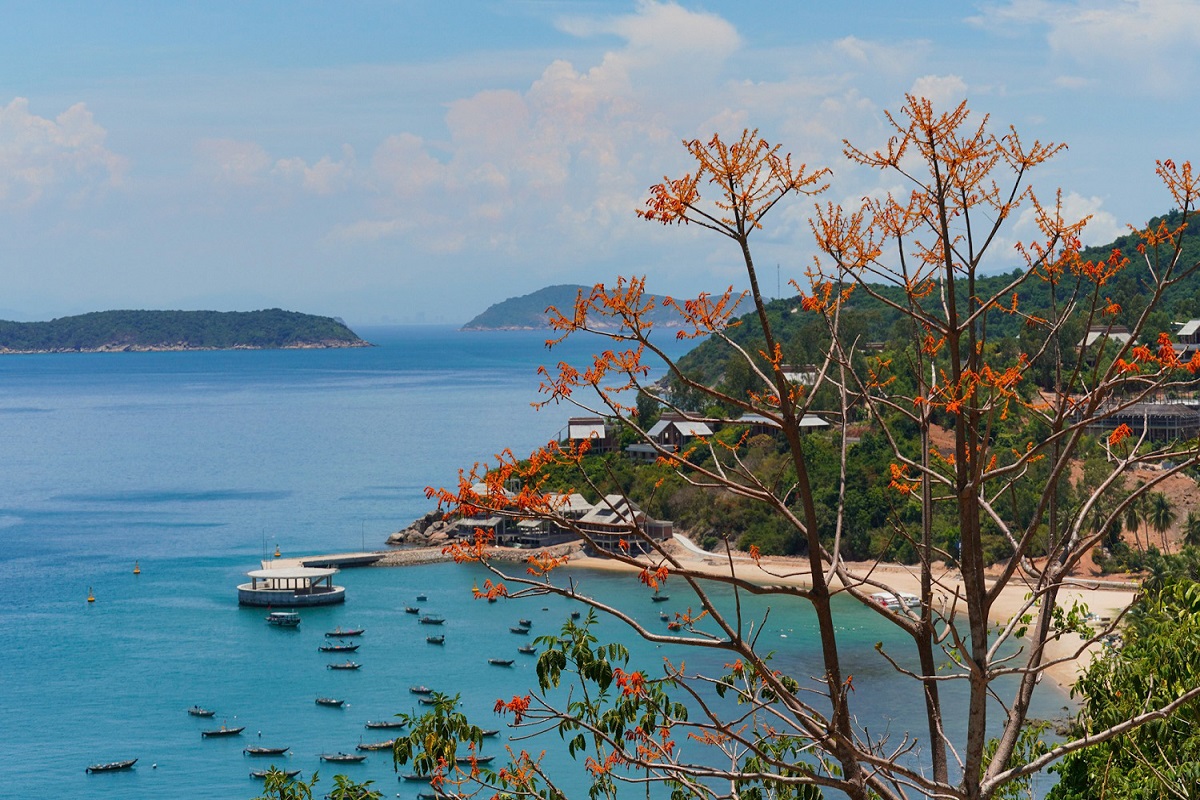








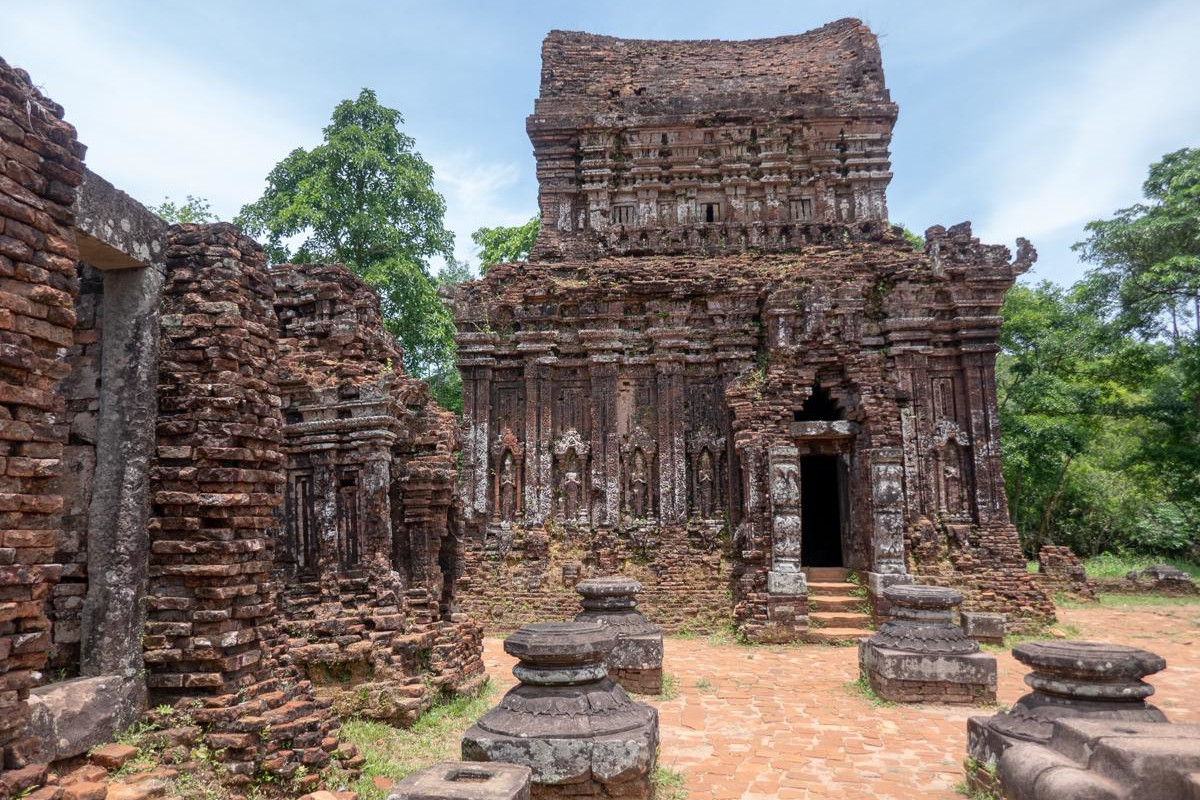

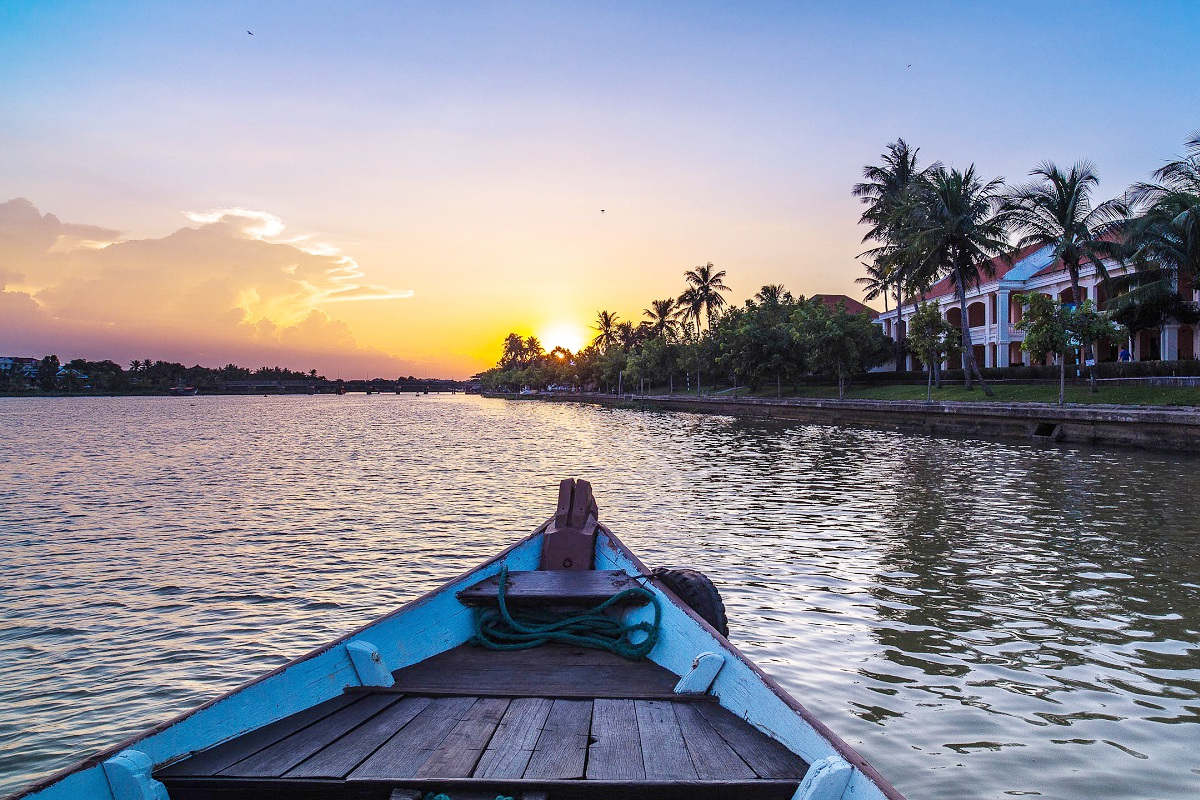





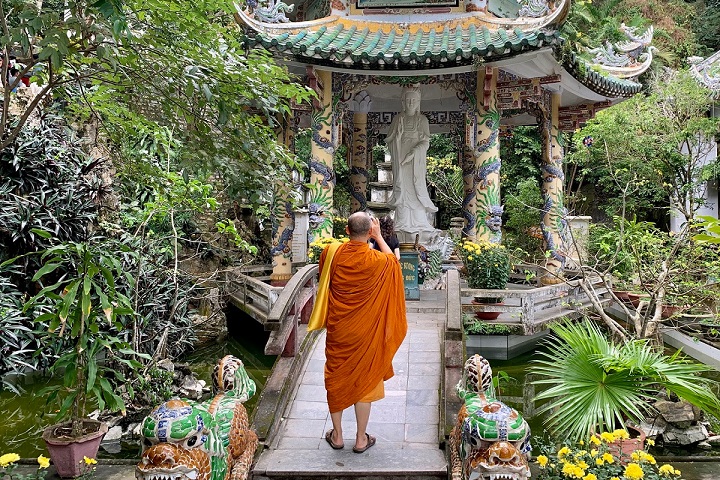


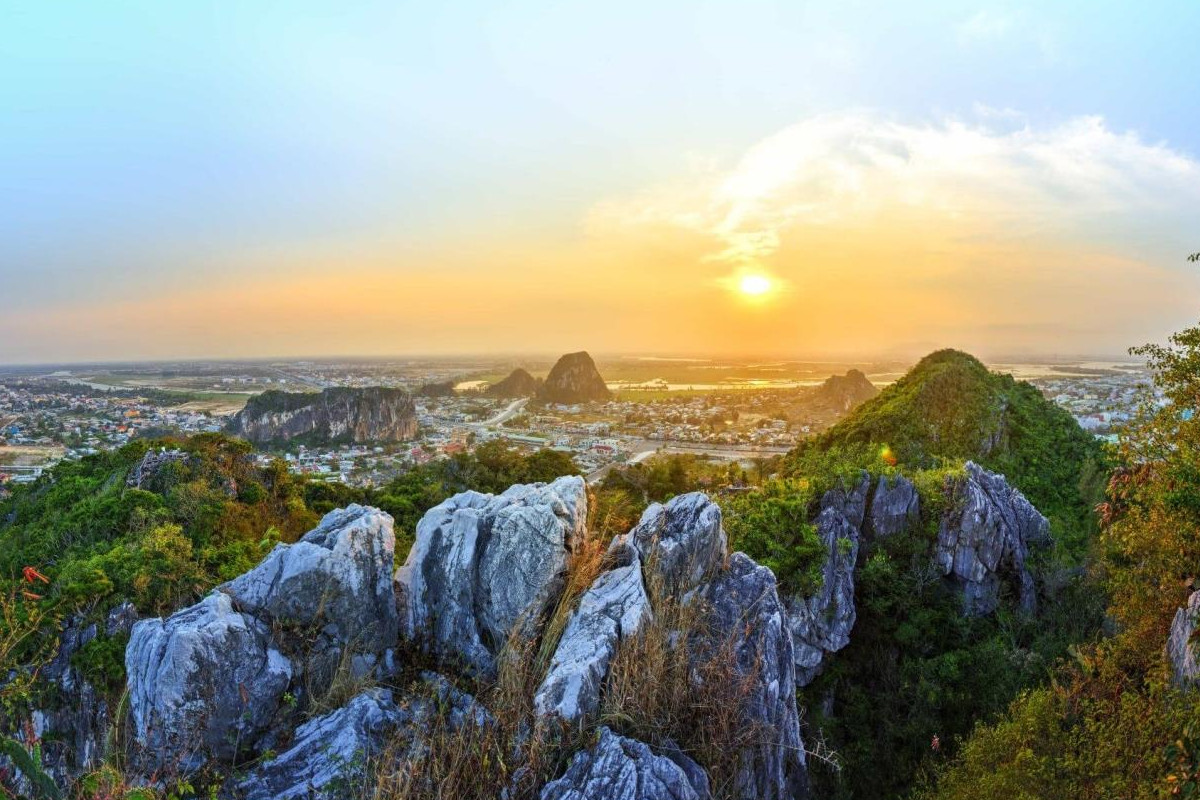
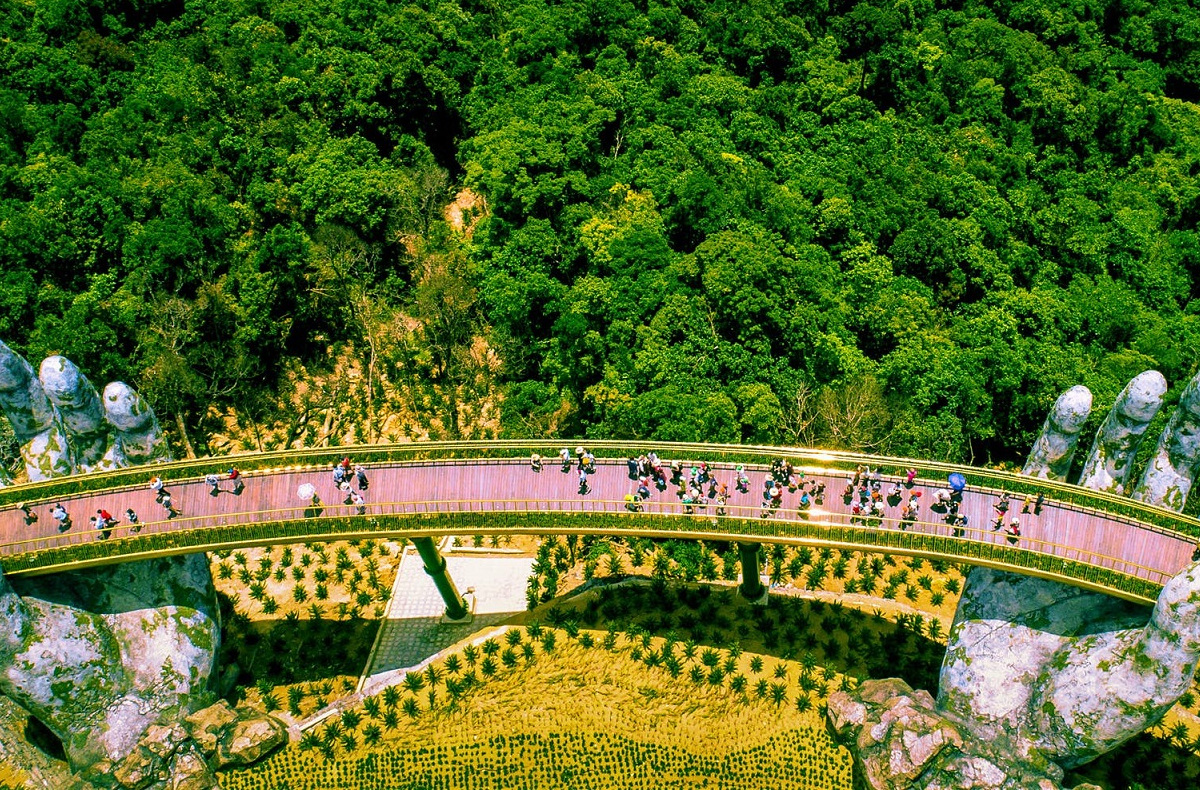














Leave a Reply